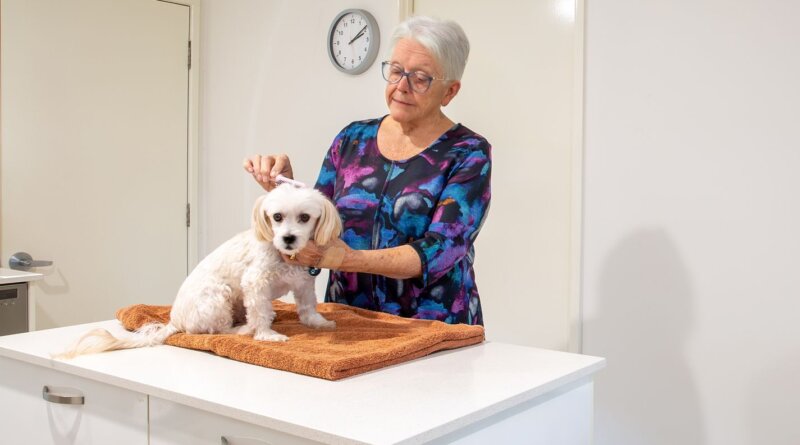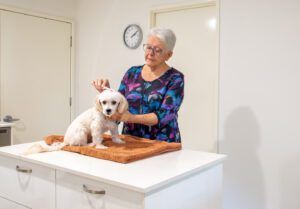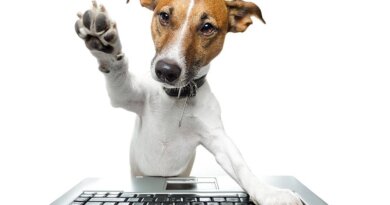Grooming Supplies for Dog Grooming at Home
Dog grooming at home is not difficult, but you do need the right grooming supplies. Besides dog nail trimming tools and a good dog grooming scissor kit to trim hair on the feet, face, and body as needed, you need a brush that is appropriate for your dog’s coat. If you truly enjoy dog grooming at home – and are good at it – you may want to consider becoming a professional. The American Academy of Pet Grooming or the National Dog Groomers Association of America can you help you get started.
Basic Grooming Supplies for Dog Home Grooming
Whole Dog Journal is reader-supported. If you purchase through links on our site we may earn a commission. Whole Dog Journal does not accept money for its food and product reviews.
Dog nail trimming tools include nail clippers and nail grinders. Use whichever you and your dog like best, or a combination of both. For ideal nail management, trim a little bit of the claw each week. One of my favorite and best nail clippers are Miller’s Forge Designer Series Nail Scissors.
Brushing should be done on a regular basis to remove dead hair and keep your dog’s coat free of tangles. How often depends a bit on your dog. A short-haired dog like a Doberman might be OK with weekly grooming, but a long-haired dog like a Sheltie often require daily grooming. It’s far easier and quicker to groom your dog more often.
A Tip for Grooming Anxious Dogs at Home
Tip: If your dog is anxious about grooming, start “grooming” with just your hand, placing your dog wherever you plan to do the actual grooming, such as on a safe table, the floor, or your lap. Let him get used to that before introducing any tools.
Other tools that you may find useful:
- Dog blow dryer that uses cool air
- Spray bottle to mist coat when brushing (reduces static)
- Electric clippers for trimming
- Shedding tools
Grooming Supplies for Short-Haired Dogs
Short-haired dogs are generally wash and wear. For dogs with a thicker coat, like a Labrador, rakes and slicker brushes are useful for removing loose hair. For dogs with a thin coat, like a Greyhound, opt for a dog grooming mitt with rubber bristles that you can use to rub your dog’s body and gently remove dead hair.
Grooming Supplies for Long-Haired Dogs
If your dog has a thick or long coat, you may need multiple brushes to manage it. Pin brushes and slickers work well for a quick “fluff and puff,” but the powerhouses are rakes and combs.
A rake with wide tines can get through dense undercoat to pull out dead hair. Then follow up with a comb to get all the way down to the skin and detangle as needed.
Tip: Mist your dog with water or a conditioning spray before brushing to reduce static and protect the hair from breakage.
Grooming shears are helpful to trim the long hair on your dog’s feet, or you can use electric clippers. If using shears, opt for a pair with blunt tips to reduce the risk of poking your dog’s skin.
If you have a Poodle, Cocker Spaniel, Shih Tzu, or other breed or mix whose hair grows a lot, it may be worth investing in a good set of electric clippers and clipper guards to shave and trim your dog’s hair at home. Note: Don’t shave your dog’s entire coat, unless instructed to do so by your veterinarian.
Groomers to the Rescue
Unsure of where to start? Contact professional groomers in your area – as your veterinarian for suggestions or check bulletin boards at local pet stores – and ask if they would be willing to teach you how to manage your dog’s coat. You will need to pay for the appointment, of course, but it is well worth it to see what tools work well for your dog’s coat type and what strategies you can use at home.
Plus, your dog will leave looking fabulous, so you start your grooming odyssey with a clean slate.
If you are nervous about certain aspects of your dog’s grooming needs, try a hybrid approach. Do maintenance coat care at home so that grooming appointments can be less often and/or less intensive.





